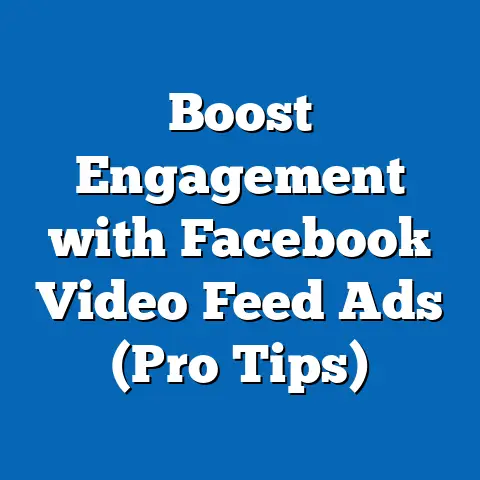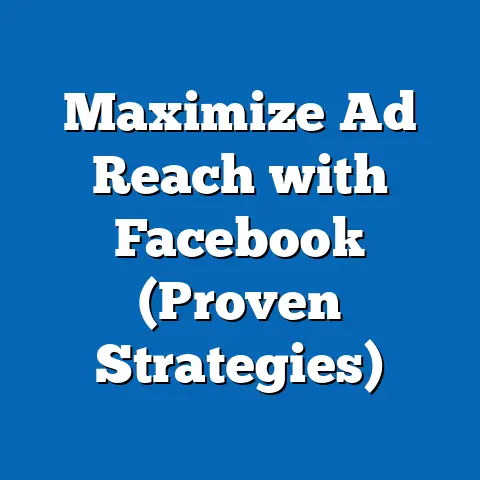Download Facebook Messenger Efficiently (Pro Tips Revealed)
In today’s hyper-connected world, staying in touch isn’t just a nice-to-have; it’s a necessity. Whether it’s catching up with family across the globe, collaborating with colleagues on a project, or building relationships with potential clients, effective communication is the lifeblood of our personal and professional lives. And in the realm of digital communication, Facebook Messenger stands out as a versatile and powerful tool. I’ve personally seen how Messenger can bridge geographical divides and foster deeper connections, making it an indispensable app for millions.
But simply having Messenger isn’t enough. To truly leverage its potential, you need to download and use it efficiently. This means understanding the platform, optimizing its settings, and mastering its features. That’s what this guide is all about. I’m going to walk you through everything you need to know to download Facebook Messenger effectively on any device, optimize it for peak performance, and unlock its hidden potential. We’ll cover everything from basic setup to advanced tips, ensuring you can stay connected seamlessly and efficiently. Let’s dive in!
Section 1: Understanding Facebook Messenger
Before we jump into the nitty-gritty of downloading and optimizing Messenger, let’s take a step back and understand what makes this app so popular and why it’s a must-have for so many.
What is Facebook Messenger?
Facebook Messenger, at its core, is a messaging app that allows you to connect with friends, family, and even businesses. But it’s so much more than just a text-based platform. It’s a hub for voice and video calls, file sharing, group chats, and even payments.
Think of it as your all-in-one communication center. You can send quick text messages, share photos and videos, or hop on a video call to see a loved one’s face. Businesses can use Messenger to provide customer support, answer questions, and even process orders.
I remember when Messenger first separated from the main Facebook app. Initially, many users, including myself, were annoyed. But over time, I realized that this separation allowed Messenger to evolve into a more robust and feature-rich platform, focused solely on communication.
Why Download Facebook Messenger?
So, why should you bother downloading Facebook Messenger when there are so many other messaging apps out there? Here’s why I think it’s a game-changer:
- Seamless Integration with Facebook: This is the most obvious benefit. If you’re already on Facebook (and let’s face it, most of us are), Messenger is the easiest way to connect with your friends and family on the platform.
- Versatile Communication Options: Text, voice, video – Messenger has it all. You can choose the communication method that best suits your needs and the situation.
- Business-Friendly Features: Messenger isn’t just for personal use. Businesses can use it to connect with customers, provide support, and even automate conversations with chatbots.
- Cross-Platform Compatibility: Messenger is available on iOS, Android, and desktop, so you can stay connected no matter what device you’re using.
- Constantly Evolving: Facebook is constantly adding new features and improvements to Messenger, making it a dynamic and evolving platform.
I’ve personally used Messenger for everything from coordinating family vacations to conducting business meetings. Its versatility and ease of use make it an essential tool for staying connected in today’s fast-paced world.
Compatibility and Availability
Before you rush off to download Messenger, it’s important to make sure your device is compatible. Here’s a quick breakdown of the platforms where Messenger is available:
- iOS: Messenger is available on iPhones and iPads running iOS 11.0 or later.
- Android: Messenger is available on Android devices running Android 5.0 (Lollipop) or later.
- Desktop: Messenger has a dedicated desktop app for Windows and Mac. You can also access Messenger through your web browser.
It’s worth noting that some features may vary depending on the platform. For example, some advanced features like screen sharing may only be available on the desktop app. Also, keep an eye out for regional restrictions. While Messenger is generally available worldwide, some features may be limited in certain countries due to local regulations.
Takeaway: Before downloading, check your device’s operating system to ensure compatibility. This will save you time and frustration down the line.
Section 2: Preparing for the Download
Now that you understand the basics of Facebook Messenger, let’s get ready to download it. Before you start, there are a few things you need to consider to ensure a smooth and hassle-free experience.
System Requirements
Just like any other app, Facebook Messenger has certain system requirements that your device needs to meet. Here’s a general overview:
- Operating System: As mentioned earlier, you’ll need iOS 11.0 or later for iOS devices, Android 5.0 (Lollipop) or later for Android devices, and a compatible version of Windows or Mac for the desktop app.
- Storage Space: Messenger requires a certain amount of storage space on your device. The exact amount will vary depending on the platform and version, but it’s generally a good idea to have at least 100MB of free space.
- Internet Connection: A stable internet connection is essential for downloading and using Messenger. Wi-Fi is recommended, but a strong cellular connection will also work.
I remember trying to download Messenger on an old phone with limited storage space. It was a frustrating experience, as the download kept failing and the app was incredibly slow to use. Don’t make the same mistake I did! Check your device’s storage space and internet connection before you start the download.
Creating a Facebook Account
To use Facebook Messenger, you’ll need a Facebook account. If you already have one, you can skip this step. But if you’re new to Facebook, here’s a quick guide on how to create an account:
- Go to Facebook.com: Open your web browser and go to Facebook’s website.
- Fill Out the Sign-Up Form: Enter your name, email address or phone number, password, date of birth, and gender.
- Verify Your Account: Facebook will send you a verification code to your email address or phone number. Enter the code to verify your account.
- Set Up Your Profile: Add a profile picture, fill out your bio, and start connecting with friends and family.
When creating your Facebook account, it’s important to choose a strong password and enable two-factor authentication to protect your account from hackers. Also, take some time to review Facebook’s privacy settings and customize them to your liking.
Takeaway: Before downloading Messenger, ensure you have a Facebook account and that your device meets the minimum system requirements. This will prevent potential issues during the download and setup process.
Section 3: Downloading Facebook Messenger on Different Platforms
Now for the main event: downloading Facebook Messenger! The process varies slightly depending on the platform you’re using, so I’ll walk you through each one step-by-step.
Downloading on iOS
Downloading Messenger on your iPhone or iPad is a breeze. Here’s how:
- Open the App Store: Locate the App Store icon on your home screen and tap it.
- Search for “Facebook Messenger”: Tap the search bar at the bottom of the screen and type “Facebook Messenger.”
- Tap “Get”: Find the Facebook Messenger app in the search results and tap the “Get” button next to it.
- Install the App: You may be prompted to enter your Apple ID password or use Touch ID/Face ID to confirm the download.
- Wait for the Download to Complete: Once the download is complete, the “Get” button will change to “Open.”
- Open Messenger: Tap the “Open” button to launch the app.
If you encounter any issues during the download, here are a few things to try:
- Check Your Internet Connection: Make sure you have a stable internet connection.
- Restart Your Device: Sometimes, a simple restart can fix download issues.
- Clear App Store Cache: Go to Settings > App Store and toggle off “Offload Unused Apps.” Then, restart your device and try downloading Messenger again.
- Update Your iOS Version: Make sure you’re running the latest version of iOS.
I once had trouble downloading an app because my iPhone was running an outdated version of iOS. Updating to the latest version fixed the issue immediately.
Downloading on Android
Downloading Messenger on your Android device is just as easy as on iOS. Here’s how:
- Open the Google Play Store: Locate the Google Play Store icon on your home screen and tap it.
- Search for “Facebook Messenger”: Tap the search bar at the top of the screen and type “Facebook Messenger.”
- Tap “Install”: Find the Facebook Messenger app in the search results and tap the “Install” button next to it.
- Accept Permissions: You may be prompted to accept certain permissions before the download can begin.
- Wait for the Download to Complete: Once the download is complete, the “Install” button will change to “Open.”
- Open Messenger: Tap the “Open” button to launch the app.
If you’re using an older Android version or an incompatible device, you may not be able to download Messenger from the Google Play Store. In that case, you can try downloading the APK file from a third-party website. However, be careful when downloading APK files from unknown sources, as they may contain malware.
Downloading on Desktop
Downloading Messenger on your Windows or Mac computer is a great way to stay connected while you’re working. Here’s how:
- Go to Messenger.com: Open your web browser and go to Messenger’s website.
- Click “Get Messenger for Windows/Mac”: You’ll see a button that says “Get Messenger for Windows” or “Get Messenger for Mac.” Click it to download the installer file.
- Run the Installer File: Once the download is complete, run the installer file and follow the on-screen instructions.
- Log In with Your Facebook Account: Once the installation is complete, open the Messenger app and log in with your Facebook account.
Alternatively, you can use Messenger on the web without downloading the desktop app. Simply go to Messenger.com and log in with your Facebook account. The web version of Messenger offers most of the same features as the desktop app, but it may not be as responsive or feature-rich.
I personally prefer using the desktop app because it allows me to stay connected without having to keep a web browser tab open. It’s also more responsive and offers better notification support.
Alternative Download Methods
While the official app stores are the safest and most reliable way to download Messenger, there are alternative methods you can use in certain situations.
- APK Files for Android: If you can’t download Messenger from the Google Play Store, you can try downloading the APK file from a third-party website. APK files are installation packages for Android apps. However, be extremely cautious when downloading APK files from unknown sources, as they may contain malware. Only download APK files from trusted websites.
- Third-Party App Stores: There are several third-party app stores that offer Messenger for download. However, these app stores may not be as secure as the official app stores, so use them with caution.
Takeaway: Download Messenger from the official app stores whenever possible. If you have to use alternative download methods, be extremely cautious and only download from trusted sources.
Section 4: Optimizing Messenger for Efficient Use
Now that you’ve downloaded Messenger, it’s time to optimize it for efficient use. This means customizing your settings, organizing your chats, and mastering the app’s built-in features.
Setting Up Notifications
Notifications are a crucial part of the Messenger experience, but they can also be a major distraction. That’s why it’s important to customize your notification settings to suit your needs.
- Turn Off Unnecessary Notifications: Go to Settings > Notifications and turn off notifications for features you don’t use or don’t need to be notified about.
- Customize Notification Sounds: Choose a notification sound that’s distinct and easily recognizable. This will help you quickly identify Messenger notifications without having to look at your phone.
- Enable Do Not Disturb Mode: If you need to focus on something important, enable Do Not Disturb mode to silence all notifications.
- Set Quiet Hours: Schedule quiet hours during which you won’t receive notifications. This is a great way to disconnect and recharge.
I used to get overwhelmed by the constant stream of Messenger notifications. But after customizing my notification settings, I was able to reduce the noise and focus on the messages that truly mattered.
Organizing Chats and Contacts
If you’re like me, you probably have dozens of chats in your Messenger inbox. Organizing these chats can help you find the conversations you’re looking for quickly and easily.
- Use Labels and Folders: Create labels and folders to categorize your chats. For example, you could create a “Family” folder for chats with family members, a “Work” folder for chats with colleagues, and a “Friends” folder for chats with friends.
- Archive Conversations: If you have conversations that you don’t need to access frequently, archive them to keep your inbox clean.
- Manage Contact Lists: Regularly review your contact list and remove any contacts you no longer need to stay in touch with.
Utilizing Built-in Features
Messenger is packed with features that can enhance your communication experience. Here are a few of my favorites:
- Voice and Video Calling: Messenger’s voice and video calling features are a great way to connect with loved ones and colleagues face-to-face.
- Stickers and Emojis: Stickers and emojis can add personality and emotion to your messages.
- Group Chats: Group chats are a great way to coordinate events, share information, and stay in touch with multiple people at once.
- Payment Features: Messenger’s payment features allow you to send and receive money directly within the app.
- Integrations with Other Apps: Messenger integrates with other apps like Spotify and Giphy, allowing you to share music and GIFs directly within your conversations.
I’ve found that using Messenger’s built-in features can make my conversations more engaging and productive. For example, I often use voice calls to have quick check-ins with my team, and I use stickers and emojis to add a touch of humor to my messages.
Takeaway: Take the time to customize your notification settings, organize your chats, and master Messenger’s built-in features. This will help you stay connected efficiently and effectively.
Section 5: Advanced Tips for Power Users
Once you’ve mastered the basics of Messenger, it’s time to dive into some advanced tips that can help you become a true power user.
Using Messenger Bots
Messenger bots are automated programs that can interact with you in Messenger. They can be used for a variety of purposes, such as providing customer support, answering questions, and even playing games.
- Find Useful Bots: There are thousands of Messenger bots available, so take some time to explore and find bots that are relevant to your interests and needs.
- Interact with Bots: To interact with a bot, simply send it a message. The bot will respond with automated messages and options.
- Use Bots for Business: If you’re a business owner, you can use Messenger bots to automate customer service, generate leads, and even process orders.
I’ve used Messenger bots to track my fitness progress, get news updates, and even order food. They’re a convenient and efficient way to get information and complete tasks without having to leave Messenger.
Keyboard Shortcuts for Desktop Users
If you use Messenger on your desktop, learning a few keyboard shortcuts can save you a lot of time and effort. Here are a few essential shortcuts:
- Ctrl+N (Windows) / Cmd+N (Mac): Start a new chat.
- Ctrl+K (Windows) / Cmd+K (Mac): Search for a contact or conversation.
- Ctrl+Shift+M (Windows) / Cmd+Shift+M (Mac): Mute/unmute a conversation.
- Ctrl+Enter (Windows) / Cmd+Enter (Mac): Send a message.
Learning these keyboard shortcuts can significantly improve your productivity and efficiency when using Messenger on your desktop.
Integrating Messenger with Other Apps
Messenger integrates with a variety of other apps and platforms, allowing you to streamline your communication and workflow.
- Facebook Business: Connect your Facebook Business Page to Messenger to provide customer support and engage with your audience.
- Instagram: Link your Instagram account to Messenger to manage your Instagram messages in one place.
- Third-Party Apps: Integrate Messenger with third-party apps like Zapier to automate tasks and connect Messenger to other services.
I’ve integrated Messenger with my Facebook Business Page to provide instant customer support and answer questions from potential clients. This has helped me build stronger relationships with my audience and generate more leads.
Takeaway: Explore Messenger’s advanced features, such as bots, keyboard shortcuts, and integrations with other apps, to become a true power user and maximize your efficiency.
Section 6: Troubleshooting Common Issues
Even with the best preparation, you may encounter issues when downloading or using Messenger. Here are some common problems and how to fix them.
Common Download Problems
- Slow Download Speed: If your download is slow, check your internet connection. Try restarting your router or connecting to a different Wi-Fi network.
- Download Error: If you encounter a download error, try restarting your device or clearing the app store cache.
- Incompatible Device: If your device is incompatible with Messenger, you may not be able to download it. Check the system requirements to make sure your device is supported.
Account and Login Issues
- Forgotten Password: If you’ve forgotten your password, click the “Forgot Password” link on the login screen and follow the instructions to reset it.
- Account Hacked: If you suspect your account has been hacked, change your password immediately and enable two-factor authentication.
- Login Error: If you encounter a login error, make sure you’re using the correct email address or phone number and password.
Performance Issues
- Slow App Speed: If Messenger is slow, try clearing the app cache and data. You can also try reinstalling the app.
- App Crashing: If Messenger is crashing, make sure you’re running the latest version of the app. You can also try restarting your device.
- High Battery Usage: If Messenger is using a lot of battery, try turning off background app refresh and reducing the frequency of notifications.
I once spent hours troubleshooting a Messenger login issue. It turned out that I was using an outdated version of the app. Updating to the latest version fixed the problem immediately.
Takeaway: Don’t panic if you encounter issues with Messenger. Most problems can be easily fixed with a few simple troubleshooting steps.
Conclusion
Downloading and using Facebook Messenger efficiently is essential for staying connected in today’s fast-paced world. By following the pro tips shared in this guide, you can download Messenger effectively on any device, optimize it for peak performance, and unlock its hidden potential.
Remember, mastering Messenger takes time and effort. Don’t be afraid to experiment with different settings and features to find what works best for you. And most importantly, stay connected and keep communicating!
In a world that’s constantly changing, the ability to connect and communicate effectively is more important than ever. Facebook Messenger is a powerful tool that can help you build stronger relationships, collaborate more effectively, and stay informed about the things that matter most. So, download Messenger today and start connecting! I hope this guide has been helpful in your journey to become a Messenger power user.






